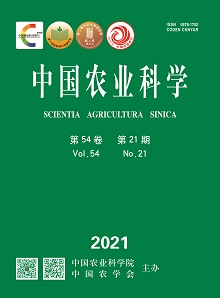【Objective】The objective of this study is to evaluate the growth promotion effect of Bacillus subtilis strain NCD-2 on tomato seedlings under salt stress, as well as the effect of strain NCD-2 on soil microbial community diversity. The results will be useful for expanding the application of strain NCD-2 in agricultural system.【Method】The pot experiments were conducted to evaluate the effects of strain NCD-2 treatment on stem length, aboveground fresh weight, aboveground dry weight, root fresh weight and root dry weight. The activity of resistance-related enzymes such as peroxidase (POD), superoxide dismutase (SOD), catalase (CAT) and the content of abscisic acid (ABA) were measured. High-throughput sequencing (Illumina MiSeq) technique was used to determine the bacterial and fungal community structures in the rhizosphere soil. The four treatments were set as NCD-2 strain suspension treatment (NCD0), 100 mmol·L -1 NaCl treatment (CK100), NCD-2 strain suspension + 100 mmol·L-1 NaCl treatment (NCD100) and water treatment as control (CK0).【Result】Under normal conditions, strain NCD-2 treatment significantly increased the biomass of tomato. The plant height, aboveground fresh weight, aboveground dry weight, root fresh weight and root dry weight were increased by 9.08%, 10.37%, 16.64%, 15.42% and 16.78%, respectively, when compared with the control. Under salt stress, compared to the control, the plant height, aboveground fresh weight, aboveground dry weight, root fresh weight and root dry weight were increased by 16.86%, 18.96%, 21.32%, 10.50% and 23.99% after treated with strain NCD-2, respectively. The activity of resistance-related enzymes SOD, POD, CAT and the content of ABA were increased by 50.45%, 56.18%, 29.55% and 34.60% after treated with strain NCD-2, respectively, when compared with the control. For bacteria community composition analysis, compared to CK0, the relative abundance of bacteria phylum Actinobacteria, Acidobacteria and Chloroflexi was increased by 7.28%, 15.14% and 23.03% after treated with strain NCD-2 without salt stress, respectively. The relative abundance of bacteria genus Arthrobacter, Sphingomonas, Microvirga and Streptomyces was increased by 50.88%, 15.31%, 11.32% and 16.41% after treated with strain NCD-2, respectively. Under 100 mmol·L -1 NaCl stress, compared to CK100, the relative abundance of bacteria phylum Proteobacteria, Actinobacteria, Firmicutes and Gemmatimonadetes was increased by 6.08%, 8.19%, 14.11% and 4.70% after treated with strain NCD-2, respectively. The relative abundance of bacteria genus Arthrobacter, Bacillus, Sphingomonas and Microvirga was increased by 5.54%, 31.80%, 23.39% and 23.08% after treated with strain NCD-2, respectively. For fungal community composition analysis, compared to CK0, the relative abundance of fungal phylum Mortierellomycota, Glomeromycota and Chytridiomycota was increased to 186%, 477% and 1 650% of CK0, respectively. The relative abundance of fungal genus Mortierella, Trichoderma and Preussia was increased to 186%, 108%, and 120% of CK0 after treated with strain NCD-2 without salt stress, respectively. Under 100 mmol·L -1 NaCl stress, compared to CK100, the relative abundance of fungal phylum Mortierellomycota, Glomeromycota and Chytridiomycota was increased to 345%, 154%, 921% of CK100 after treated with strain NCD-2, respectively. The relative abundance of fungal genus Mortierella was increased by 246% after treated with strain NCD-2.【Conclusion】After the treatment of strain NCD-2 under salt stress, the activity of stress-resistant enzymes and the content of ABA in tomato were increased, and the population of beneficial microorganisms in tomato rhizosphere was increased, thus improving the tolerance of tomato to salt stress and significantly increasing the growth and development of tomato.









